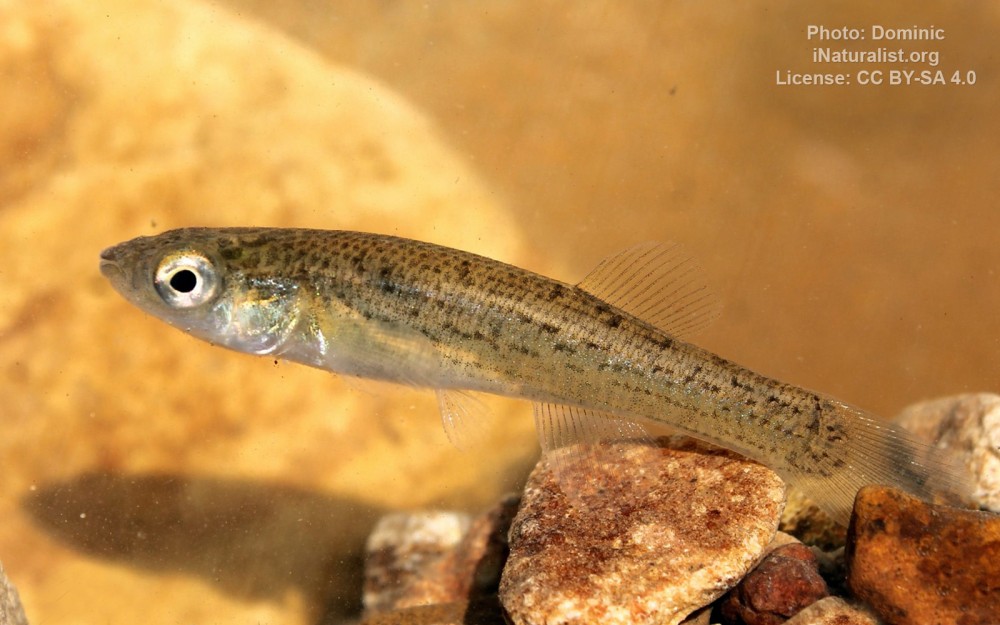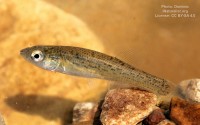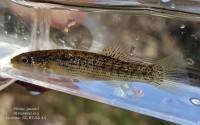Disjunct Studfish
(Fundulus cryptocatenatus)

Image source: Dominic | inaturalist.org
Classification
General data
The Disjunct Studfish (Fundulus cryptocatenatus) is a newly described species, distinguished from its close relative, the Northern Studfish (Fundulus catenatus), through molecular phylogenetic and population genomic analyses.
Fundulus cryptocatenatus exhibits a notably disjunct distribution across various river systems in the United States:
Ozark Highlands: This includes tributaries of the Missouri River, direct tributaries to the Mississippi River, the upper Arkansas River, and the Black and White River drainages.
Eastern Highlands: Populations are found in the Cumberland and Green River drainages.
Southwestern Mississippi: The species inhabits tributaries of the Homochitto and Amite Rivers.
Indiana: It is present in small tributaries to the East Fork White River.
The species name, cryptocatenatus, combines the Greek word kryptos (hidden) with catenatus, highlighting its cryptic nature and morphological similarity to F. catenatus.
While specific habitat details for F. cryptocatenatus are limited, its close resemblance to F. catenatus suggests similar ecological preferences. Typically, these fish inhabit clear, shallow pools and backwaters of creeks and small to medium rivers, often with sandy or gravelly substrates.
As F. cryptocatenatus was described in 2025, its conservation status has not yet been evaluated by the IUCN. However, the species fragmented distribution and limited range may warrant attention from conservationists to ensure its habitats are preserved.












